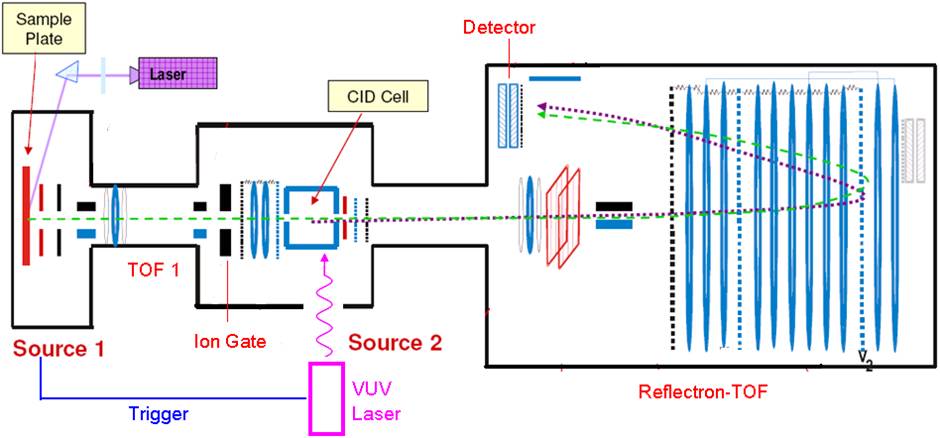
Ion fragmentation can be desirable or undesirable, depending on how extensive it is and on the nature of the mass spectrometry experiment. The best situation is to have some control over the fragmentation process. Laser induced photofragmentation provides us with a number of technological advantages over collision induced dissociation that we are exploiting on a number of instrumental platforms.
We are developing mass spectrometric methods for analyzing cellular constituents. To identify proteins, computer algorithms are commonly employed to compare collisional fragmentation data on peptide ions with predictions derived from protein sequence databases. Agreement is often marginal. Photofragmentation of peptide ions with vacuum ultraviolet laser light yields more informative fragmentation patterns that can be directly interpretable. Photofragmentation data will be analyzed with a combination of de novo sequencing and database matching to improve the reliability of identifications and our fundamental understanding of the phenomenon.